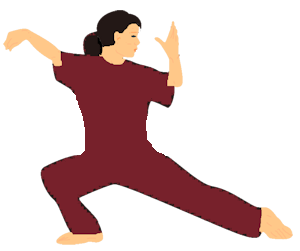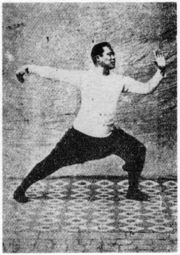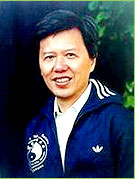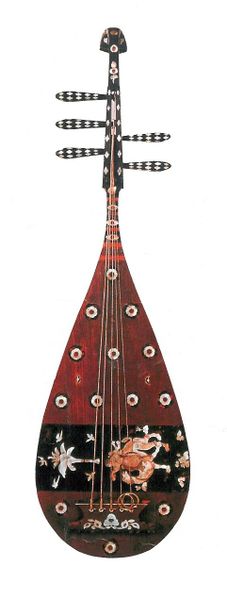
If you are a student of Taoist tai chi who has stumbled across this page by accident, beware. In 2007, the Taoist Tai Chi Society banished me for writing it. They might punish you for reading it.

Studying Taoist tai chi provides many health benefits — and it's fun.
Tai Chi, also known as Tai Chi Chuan, is a Chinese "martial" art, a low-impact exercise that involves slow, deliberate movements, and deep breathing, which can improve balance, flexibility, and strength.
Tai chi can be perceived as difficult, because it requires patience and memory, and evolves a deep mind-body connection. It's not about muscular strength, but about learning to flow with each movement. This comes about through regular practice.
Many historians believe that Tai Chi originated with the ninth-century Taoist philosopher Li Daotzu (or Li Tao-Tzu), who defined the first 37 moves in a book called The Earlier Heaven Movements. Two centuries later, according to legend, Zhang San Feng (or Cheung San-feng), another priest in a Shaolin Temple in China, morphed the earlier philosophy into a system of self-defense, Tai Chi Chuan. Today there are five principle "schools" of Tai Chi Chuan: Chen, Yang, Hao, Sun and Wu. All of them can be traced back to a single man, Chen Wang Ting, a general of the latter years of the Ming Dynasty, who in the years immediately after 1644 created seven sets, only two of which have survived to the present day.
 Yang Cheng-fu was the best-known teacher of tai chi in history, and he was among the first to offer
instruction in tai chi to the general public. This is a 1918 photo of him performing "Single Whip."
Yang Cheng-fu was the best-known teacher of tai chi in history, and he was among the first to offer
instruction in tai chi to the general public. This is a 1918 photo of him performing "Single Whip."
Taoist Tai Chi, which originated in the Yang school, was developed by Master Moy Lin-Shin around 1970. Master Moy was a sickly child, and it has been said that when he was ten, his parents took him to a monastery in Guangdong and told the monks he was dying — and through the Earlier Heaven Wu-chi sect of the Hua Shan School of Taoism, he regained his health. Around 1950, Master Moy became a Shaolin monk himself, and in 1968, with two others, he founded the Fung Loy Kok Institute of Taoism. ( The Wikipedia biography of Master Moy is quite interesting.) One of the leading members of the St. Petersburg, FL branch of the Taoist Tai Chi Society says that Master Moy invented Taoist Tai Chi because he felt that his true interest, Lok Hup Ba Fa, was too difficult for most students; he himself had spent two years learning the first two moves well enough for his instructor to allow him to continue.
 Moy Lin-Shin, 1931-98
Moy Lin-Shin, 1931-98
Although tai chi was originally a martial art, Taoist Tai Chi was called "moving
meditation" by Master Moy. It is a system of slow, gentle, graceful movements aimed at
the promotion and restoration of health. It improves balance (at least, while you're doing it), circulation, and coordination
and such conditions as rheumatoid arthritis, and many older students have volunteered (in
my hearing) that their doctors have told them they have regained lost inches of height.
Medical studies have concluded that the regular practice of tai chi
promotes longevity.
If the full 108-move Taoist Tai Chi "set" were music, it would consist of
three to six movements. "Appear to Close Entrance / Cross Hands" is done three
times, and so one could consider three movements: 1-17, the warm-up (allegro — about two minutes,
not including the bow); 18-55 (scherzo — about five minutes); and
56-108 (allegro — about six minutes, plus about 10 seconds for
the final bow).
That's one way to look at it. Here's another: Moves 21 through 36 and moves 78 through 92 are identical except for the number of "Cloud Hands"; I call them "Monkey Pats Pony (5)" and "Monkey Pats Pony (3)." (Alert students of tai chi will have noticed long ago that there are only two differences between moves 21-36 and 78-92: (1) "Turn and Chop With Fist" is called by its presumably ancient name, "White Snake Turns and Puts Out Tongue"; and (2) every list in the world of the 108 movements of Taoist tai chi acknowledges only two "Repel Monkeys," even though three are done in reality. I'll bet if you asked the leadership of TTCS why the lie, they would mumble something and quickly change the subject. Here's MY guess: 108 is a "holy number" in several religions, including Hinduism and Buddhism, and it is an important number in Chinese martial arts (including karate, wing chun, kuk sool wong, and tai chi) and Chinese medicine. 109 is the 29th prime number and the number of JFK's PT boat, but it has no special significance in either religion or the martial arts. So, faced with a 109-move set, Master Moy folded two "Repel Monkeys" into one so that the set would be 108 moves.)
In 1995, Chris Van Fleet wrote, "As I move into my fifth year of [Taoist] tai chi practice, the changes in my body provide a constant source of joy, peace, and discovery that I have never before known. For me, this sensation is a glimmer of perfect order, tenderness, perhaps divinity itself. While my physical awareness for the time being seems to be moving inward, the spiritual growth that comes from a greater sense of harmony and connection with others keeps expanding."
(Hover over differently-colored text to see my comment.)
Warm-Up: The First 17 Moves (Opening to Appear to Close Entrance and Cross Hands) |

|
First Carry Tiger, Diagonal "Single Whip," and Fist Under Elbow |
|
Monkey Pats Pony |
|
Wobblefest
“Wobblefest” describes the two toe kicks and five heel kicks of this section.
|
|
Horsies Stomp Chicken |
|
Monkey Pats Pony (3) |
|
The Grand Finale (Final 16 Moves) |
|
With gratitude to the Canadian Tai Chi Academy. Do a YouTube search for the CTCA and Doug Nettleton, who was one of Mr. Moy's students. There are two excellent ten-minute videos of Doug doing the set in 2008, one from the front and one from the back.
608 : /diversions/TaiChi108.php : 25Sep22
This is content that OUGHT to be replaced.